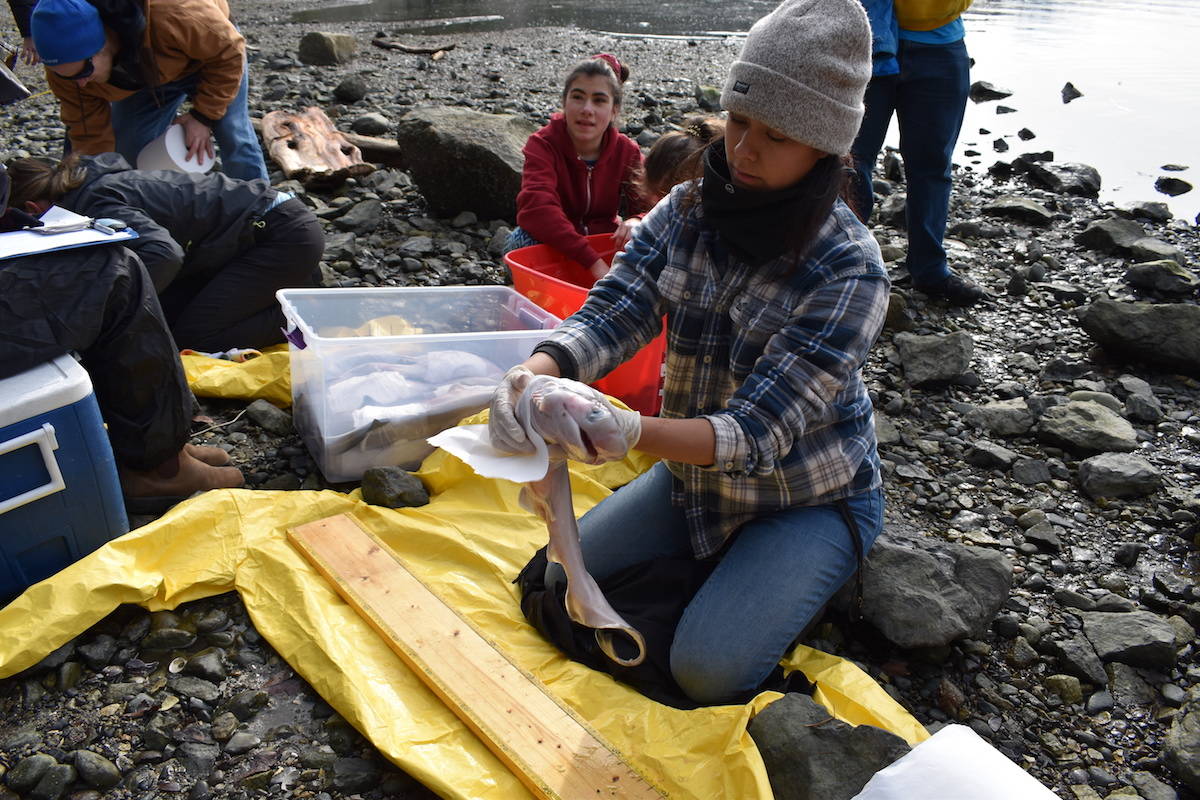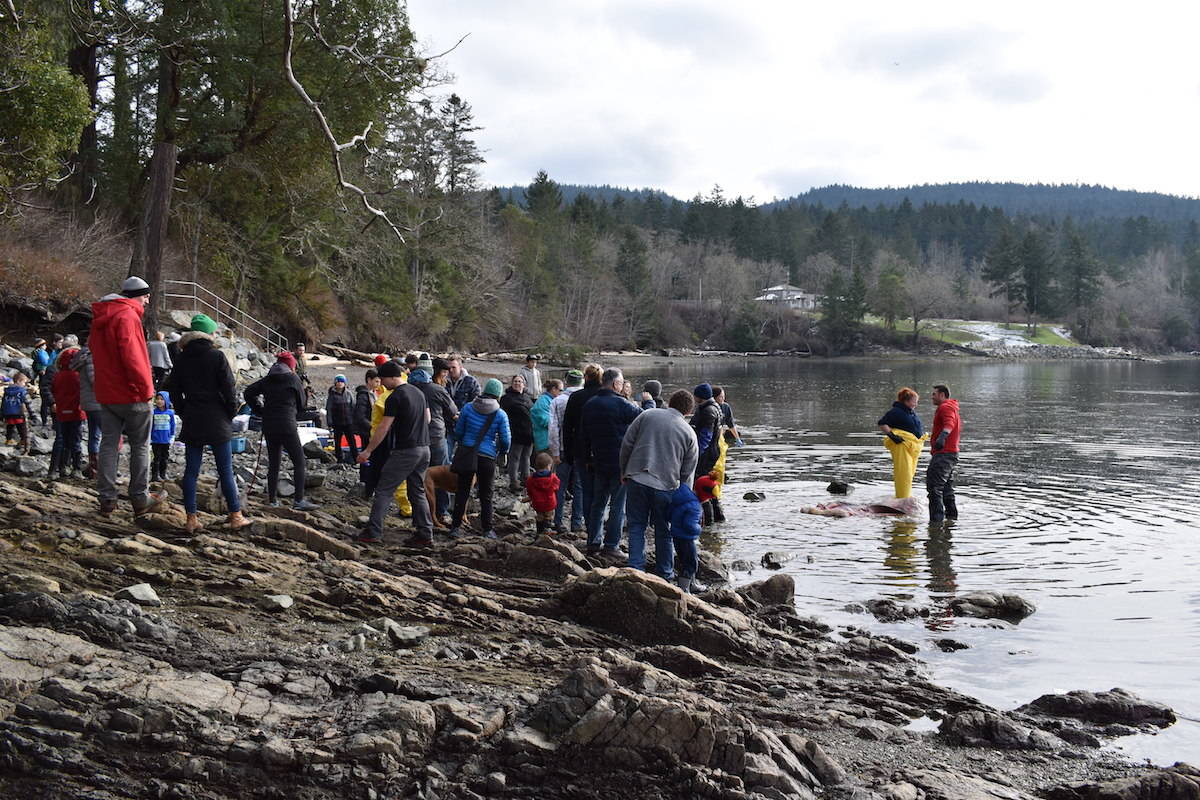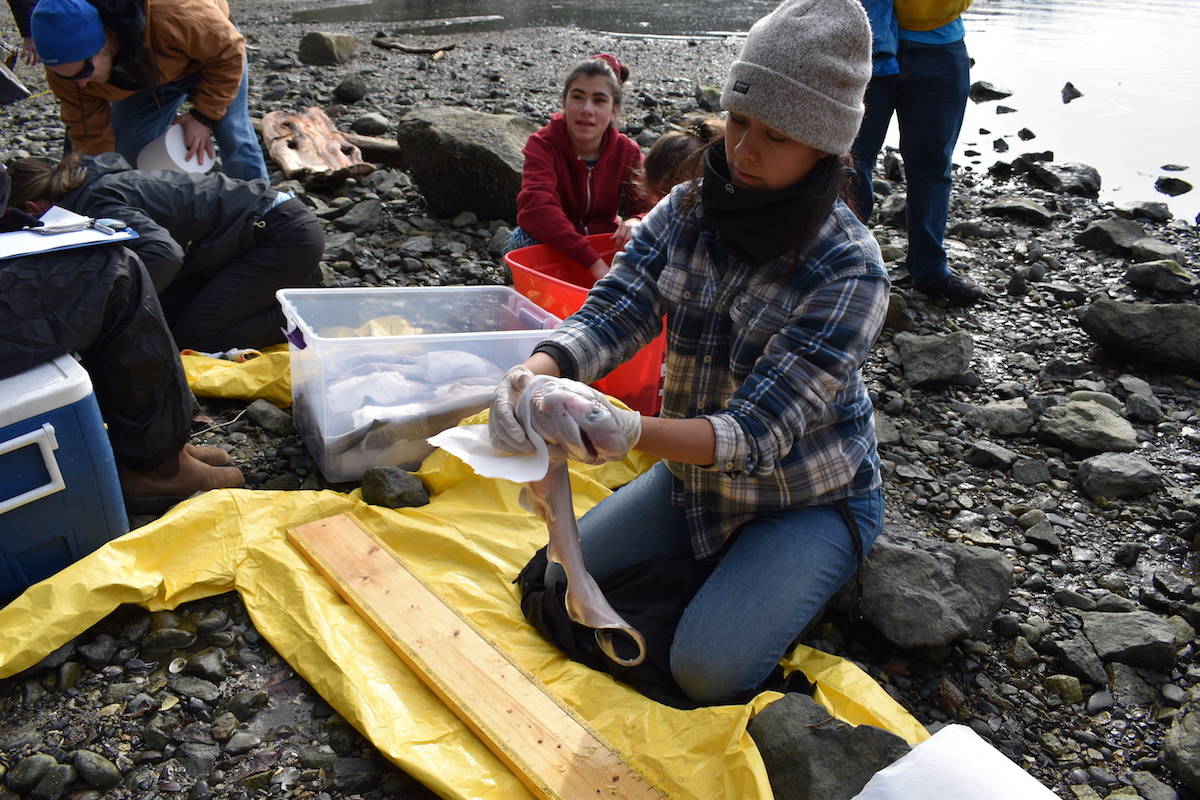About 70 baby sharks were removed this week from the carcass of the bluntnose sixgill shark that washed ashore at Coles Bay in North Saanich.
In front of a curious crowd of onlookers, the autopsy, known as a necropsy, was performed by scientists from the University of Victoria’s Baum and Juanes laboratories.
RELATED: 10-foot-long shark washes ashore in North Saanich
The scientists took samples that they plan to investigate using chemical analyses called stable isotopes, back at UVic. This will show what the mother was eating in the period before her death and how this compares to the food consumed by her babies. Another department will also study the sharks’ stomachs and livers for the presence of micro-plastics.
The shark, known as a Hexanchus griseus, washed ashore on Feb. 5. One of the first people to investigate it was Brian Timmer, who is a student in the Juanes laboratory.
He said his team was granted permission from Fisheries and Oceans Canada to take samples.
RELATED: North Saanich mystery shark identified, UVic lab seeks to do necropsy
Experts thought the fact the shark was pregnant meant she died because of complications while she gave birth. Mother sharks are known to come into shallower waters to give birth and have large litters of 20 to 100 pups.
Geoff Osgood, studying for his PHD in sharks, counselled caution in coming to conclusions until further investigations had taken place.
He said that although this species of shark is thought to be common because they normally live in such deep water, there are many aspects of their behaviour and life that are unknown.
READ ALSO: Ratfish generates social media buzz on Vancouver Island
He was especially interested in their population numbers.
“We can take a look at how many pups are present,” he added. “It’s useful in understanding its growth rate, how quickly their populations can grow.”
“Right now, Canada has [this species] listed as ‘special concern.’ Because sharks, in general, are a very slow growing species, they take a long time to reach maturity, their gestation period is very long, and compared to other bony fish who can release millions of eggs at a time, it [the number of babies] is no where near the levels of millions at a time.”
READ ALSO: Rare ‘king-of-the-salmon’ washes up on Oak Bay beach
There has already been interest from across North America in the North Saanich shark. Researchers have fielded calls from Californian scientists looking to collaborate.
Timmer said the team is especially excited, as the research they conduct in the coming weeks will lead to a published scientific paper later in the year.
nick.murray@peninsulanewsreview.com
Like us on Facebook and follow us on Twitter


